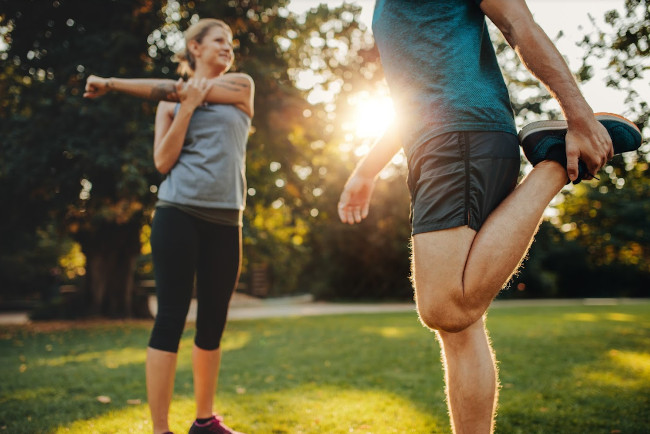
Taking care of your muscles is important, as they are responsible for keeping you strong. If you don’t give them the proper care they need, you may be prone to degenerative diseases. Whether you’re an athlete or a regular person, keeping your muscles healthy can prevent problems from developing later on.
Healthy muscles aren’t just for those in their twenties and thirties. Knowing the right ways of treating your muscles can help keep you strong even in your senior years. Here’s how.
1. Get A Massage
Massages are no longer just a treat that individuals get to enjoy only at spas and health clubs. Involving the rubbing, pressing, and manipulation of muscles, ligaments, and tendons, as well as combinations of light and intense pressure and strokes, massages offer many great health benefits.
Today, there are different kinds of massages you can get, and they offer the following benefits:
- Improves the body’s immune function
- Increases relaxation while lowering stress
- Lowers heart rate and blood pressure
- Reduces pain, tension, and soreness
- Enhances blood circulation, alertness, and energy
Because of all the benefits it can bring to one’s physical health, massage therapy is also offered at hospitals and clinics to help patients deal with body pain related to certain conditions. If you think you or a loved one may need massage therapy, you can visit www.easyalliedhealth.ca.
2. Warm Up And Cool Down
Staying physically active can help ease daily stress and anxiety, but it can put a strain on your muscles if you don’t take the proper precautions. Warming up your muscles for up to 20 minutes before the physical activity can help prepare your cardiovascular system by increasing blood flow and thus raising your body’s temperature. This helps lower the risk of soreness and injury.
If you’re about to work out and subject specific muscle groups to stressful movements, consider warming them up first. You can do this by going for a light jog, brisk walking, and more.
After your workout or after any strenuous activity, take another 20 minutes to cool down your muscles. Cooling down can be done in the same way as you warmed up, but at a slower and more relaxed pace. This allows your muscles to relax after the intense activity, which helps your muscles to gradually recover.

3. Do Stretching Exercises
You can do stretching exercises after warming up or cooling down. During this time, the muscles are prepared to do a wide range of motions. Stretching can also act as additional exercise before and after a more intense workout.
There are two main ways you can stretch. The most common one is static stretching, which involves stretching a specific muscle or muscle group and holding that stretch for 15 to 60 seconds. It’s ideal to do this gently, as it allows the muscles and connective tissue to reset.
The other type of stretch is dynamic stretching, which is often used as a warm-up activity before a workout or athletic event. This differs from static stretching in that you’re expected to move your joints and muscles through a full range of motion in order to reduce muscle stiffness. Examples of dynamic stretches include torso twists and walking lunges.
4. Eat Protein-Rich Foods
If you want your muscles to be in top condition, what you eat is just as essential. Foods that are rich in protein should be a staple in your diet because they help build muscle fibers. Protein provides structural elements to cells and binds them together to form tissues. They consist of amino acids that are important for growing and repairing muscle tissue. Everyone needs protein to recover, perform physical tasks, and sustain their muscles.
The foods rich in protein are lean meat (beef, pork, and poultry), fish and shellfish, legumes, eggs, beans, and a variety of dairy products, such as milk, cheese, and yogurt. Keep note that the more high-quality the food, the better.
Aside from protein, you should also have carbohydrates for energy, as well as fats and minerals to support the overall functions of the body.
5. Hydrate Regularly
Water is good not only for the digestive system but for the rest of the body as well. A body that is well hydrated is a body that has healthy blood flow, good kidney functions, and better overall health. Having enough water in your body is just as important as having a nutritious meal. Water contains electrolytes, which help retain muscle strength and control.
Like protein, water acts as another component for building muscle. It’s recommended that average individuals have at least two liters of water daily or eight glasses of water throughout the day. Those who are physically active tend to lose water in their body more quickly, as they sweat more often, so they should increase their intake of water by drinking a few more glasses a day.
Conclusion
Your muscles protect your skeletal system and support your everyday movements. If they aren’t taken care of and thus become weak, you will have a difficult time accomplishing physical tasks, even simple ones such as walking or lifting your arm. For that reason, it’s important to pay attention to how you treat your muscles. Follow the above-mentioned tips to keep your muscles healthy and maintain your overall health.





